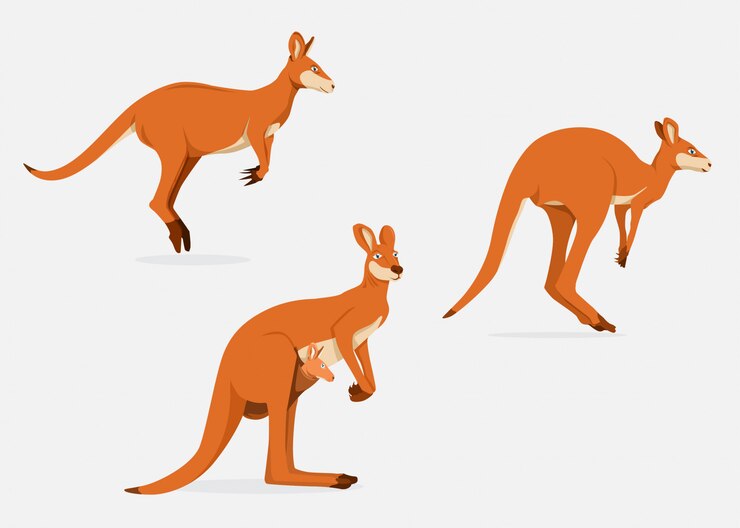Many people find themselves confused when trying to convert the age of a kangaroo from kangaroo years to human years. Kangaroos and humans age differently, making direct conversion tricky.
We will explore the reasons for confusion around kangaroo to human age conversion, explain the challenges in developing a simple formula, provide the current best practices for estimation, and share some fun facts along the way.
There are several reasons why converting kangaroo years to human years can be confusing:
- Kangaroos have a different average lifespan than humans. Kangaroos live around 6-10 years on average, whereas modern humans live 70+ years. This makes a 1:1 direct conversion illogical.
- Kangaroos reach sexual maturity at around 18 months old. This is well before a human reaches sexual maturity, causing mismatches when comparing early developmental stages.
- Kangaroos are considered “macropods” – meaning “big foot”. They hop everywhere on two muscular hind legs and thick tails, while humans walk upright on two legs. The extra hop in their step puts more wear and tear on a kangaroo body.
- Kangaroos continue to grow throughout life. They don’t have a clear equivalent to human “childhood” and “adulthood”. Their bodies develop more gradually.
- Wild kangaroos lead harsher lives than modern protected humans. Exposure, malnutrition, and animal attacks make kangaroo years less directly comparable to human years.
With so many biological differences, it becomes difficult to pin down a simple formula for age conversion. Let’s explore some approaches that provide rough estimates.
Kangaroo Years to Human Years
Kangaroos are marsupials native to Australia. They are known for their powerful hind legs, strong tails, and unique hopping locomotion. Kangaroos are also recognized for their pouch, where the female carries and nourishes her young.
Lifespan:
The lifespan of kangaroos varies by species:
- Red Kangaroo: The largest of all kangaroos, they can live up to 20-25 years in the wild and even longer in captivity.
- Eastern Grey Kangaroo: Typically live for about 8-12 years in the wild.
- Western Grey Kangaroo: Have an average lifespan of 10 years in the wild.
Maturity:
Most kangaroos reach sexual maturity by the age of 2 years.
Approach for Kangaroo Age Conversion:

Given the diversity in kangaroo species and their lifespans, we’ll consider the Red Kangaroo for this exercise due to its longer lifespan and prominence as a representative species.
Considering the average human lifespan is roughly 80 years and the average lifespan of a Red Kangaroo in the wild is about 22.5 years (average of 20-25 years):
- Every 1 year of a Red Kangaroo’s life is equivalent to 80/22.5 ≈ 3.56 human years.
Conversion Formula for Kangaroos:
Human Years=Kangaroo Years×3.56Human Years=Kangaroo Years×3.56
Estimation Methods
Researchers have devised various formulas over the years to translate kangaroo years into human years. Here are a few common methods:
The 10-1 Rule
This rule of thumb states that for every human year, a kangaroo ages approximately 10 years. So a 3 year old kangaroo would be roughly 30 years old in human years. This provides an easy benchmark, but is very imprecise.
The Pet Calculator Formula
This approach uses the formula: Human years = [Kangaroo years x (Average human lifespan / Average kangaroo lifespan)]
For example, a 6 year old kangaroo would be: Human years = 6 x (80 years / 10 years) = 48 years old
This accounts for differences in average lifespan and matches developmental stages better than 10-1. However, it has flaws for early and late life.
Stages of Life Approach

In this method, kangaroo life is categorized into 5 stages based on breeding maturity:
- Joey: Birth to 1 year (infant)
- Young: 1- 3 years (childhood)
- Adolescent: 3-4 years (teenager)
- Adult: 4-8 years (adult)
- Mature: 8+ years (senior)
The corresponding human life stages are applied. For example, an adolescent kangaroo of 3.5 years would be considered similar to a 16 year old human teenager.
This approach is more accurate but requires understanding kangaroo development. It works best for zookeepers and wildlife experts familiar with kangaroo life stages.
As we can see, converting kangaroo to human age is not as simple as a single formula. The most accurate way to gauge a kangaroo’s relative human age is to use a combination of all three approaches.
Fun Facts
To wrap up, here are a few interesting facts that highlight how kangaroos and humans differ:
- Kangaroos have good eyesight and excellent hearing, but a weak sense of smell. Humans have moderate sight and hearing but a strong sense of smell.
- Joeys are born without fully developed legs and stay in their mother’s pouch for 9 months before venturing out. Human babies are born with functional legs and arms.
- At top speed, kangaroos can run 35 miles per hour. The fastest human runners top out around 15-20 mph.
- Kangaroos use their thick tails for balance while hopping. Humans walk upright without the need for a counterbalancing tail.
- Kangaroos are herbivores that regurgitate their food to chew it as cud before final digestion. Humans have teeth and guts evolved for an omnivorous diet.

Leave a Reply